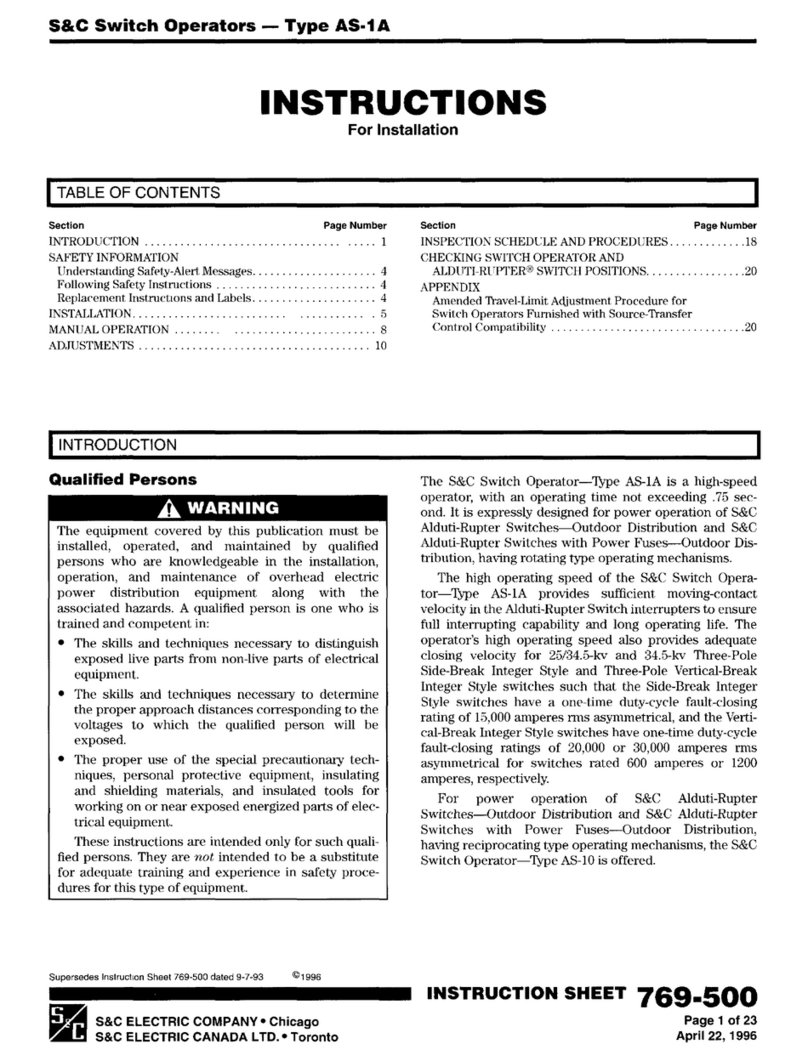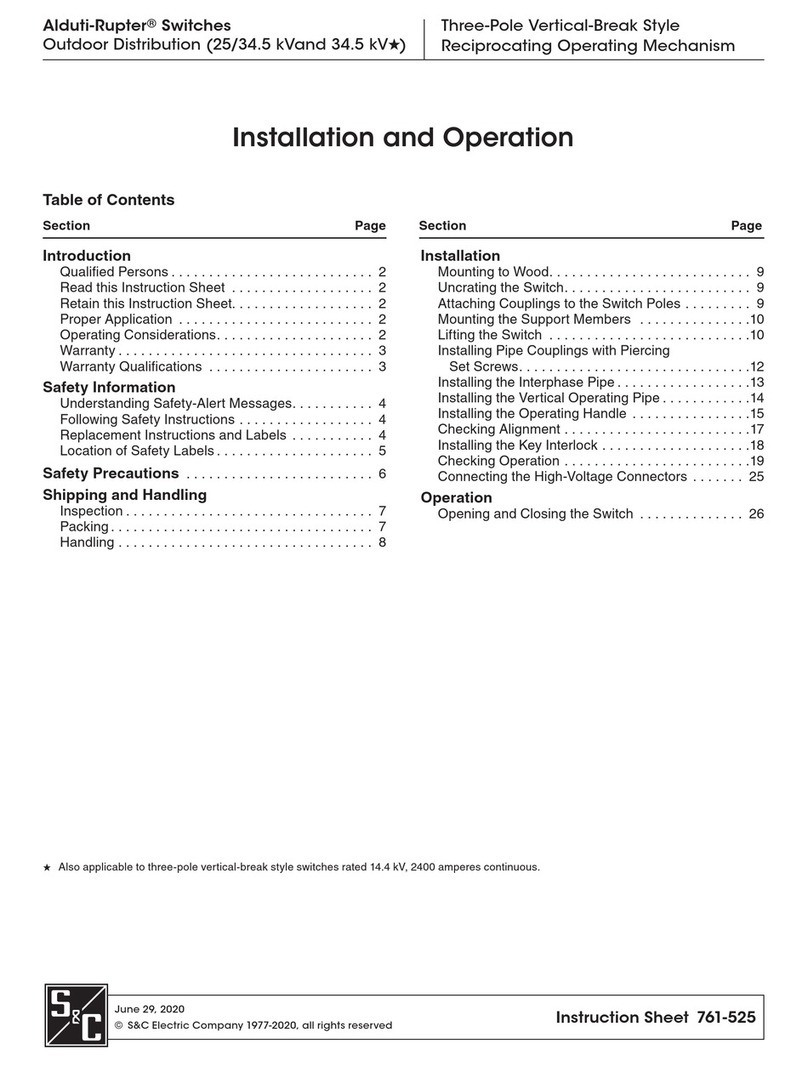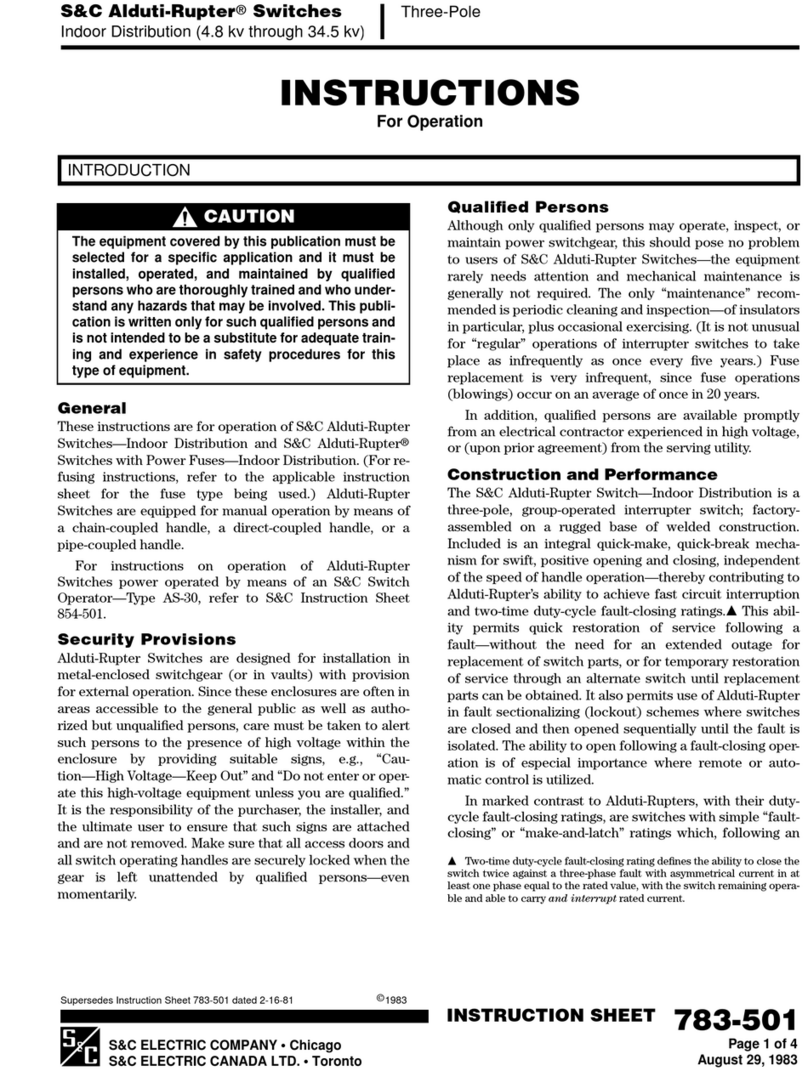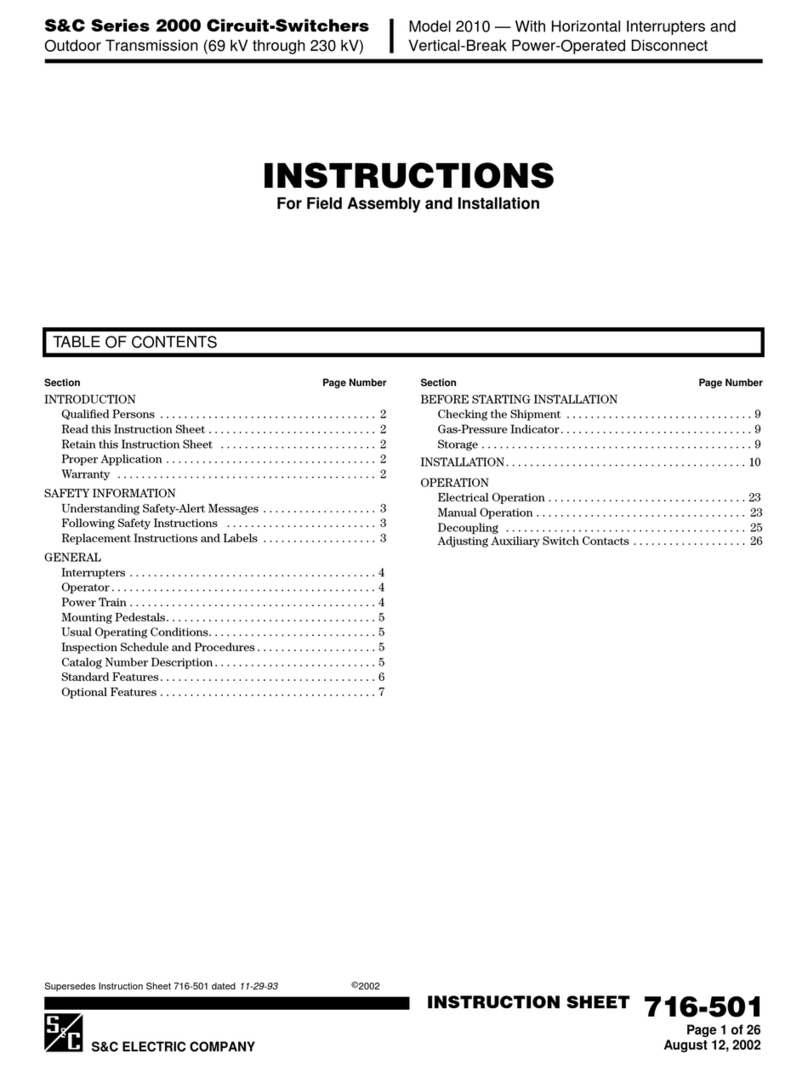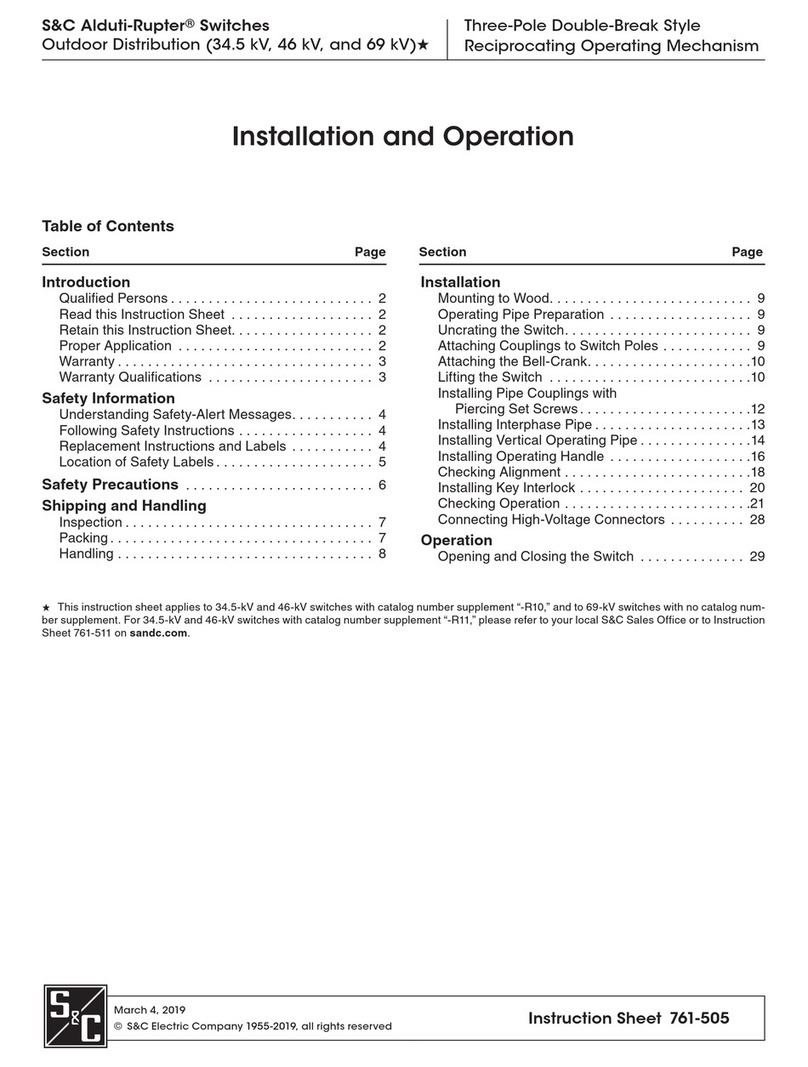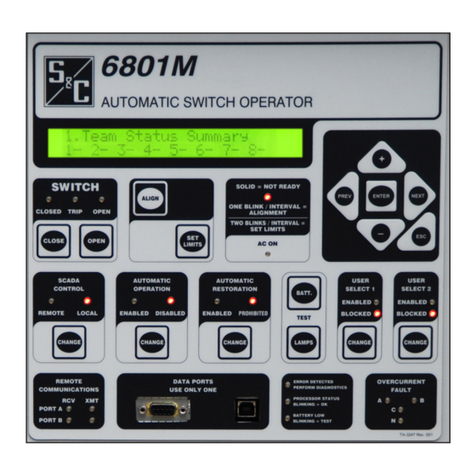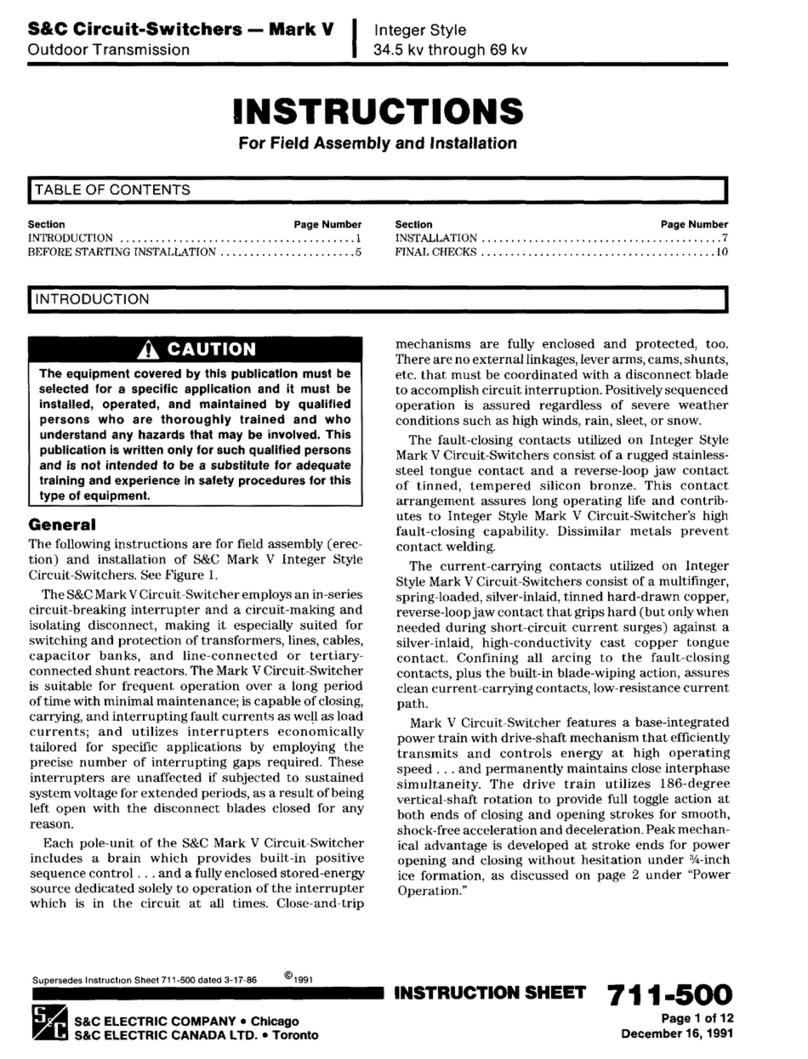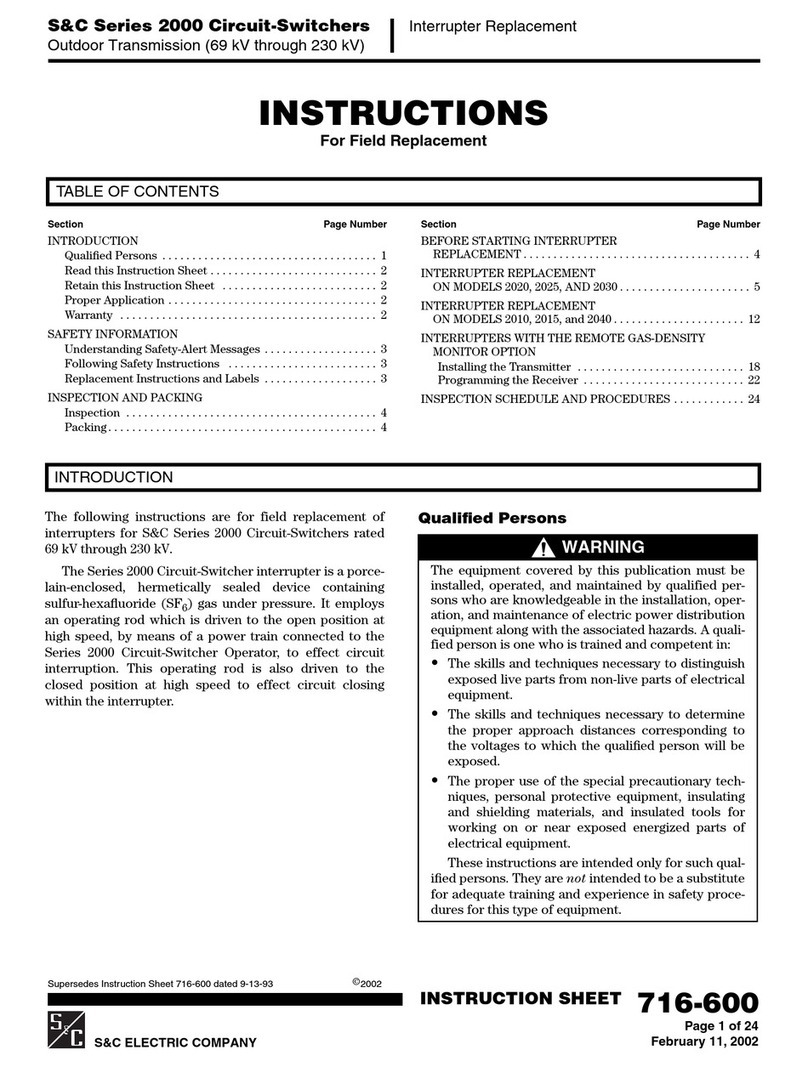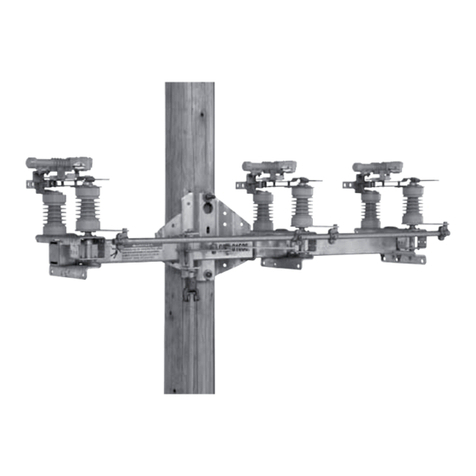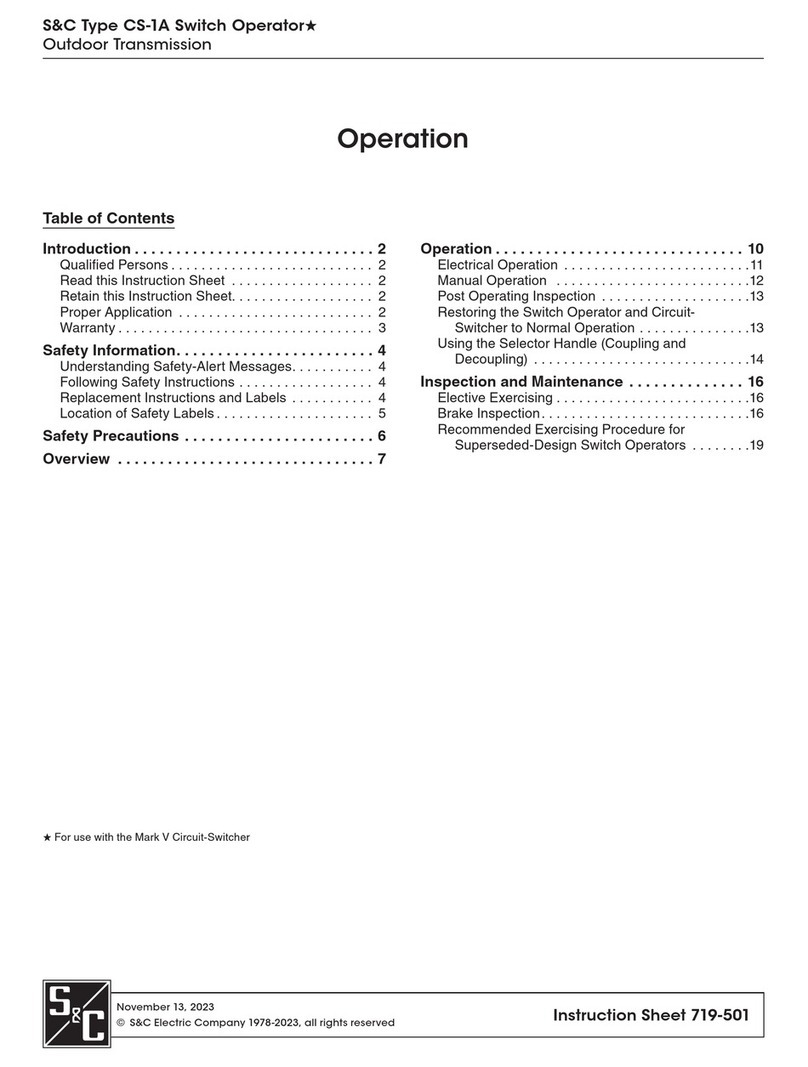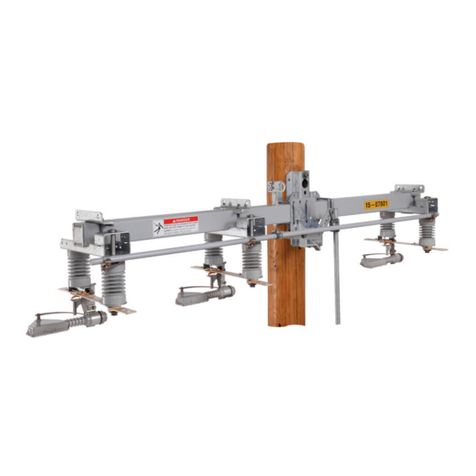
2S&C Instruction Sheet 712-501
Introduction
Qualified Persons ÇWARNING
The equipment covered by this publication must be installed, operated, and maintained
by qualified persons who are knowledgeable in the installation, operation, and main-
tenance of overhead electric power distribution equipment along with the associated
hazards. A qualified person is one who is trained and competent in:
• The skills and techniques necessary to distinguish exposed live parts from non-live
parts of electrical equipment.
• The skills and techniques necessary to determine the proper approach distances
corresponding to the voltages to which the qualified person will be exposed.
• The proper use of the special precautionary techniques, personal protective equip-
ment, insulating and shielding materials, and insulated tools for working on or near
exposed energized parts of electrical equipment.
These instructions are intended only for such qualified persons. They are not
intended to be a substitute for adequate training and experience in safety procedures
for this type of equipment.
Read this
Instruction Sheet
Read this instruction sheet thoroughly and carefully before installing or operating your
S&C Circuit-Switcher—Mark VI. Familiarize yourself with “SAFETY INFORMATION” on
pages 3 and 4. The latest version of this publication is available online in PDF format at
www.sandc.com. Support/Product Literature Library.
Retain this
Instruction Sheet
This instruction sheet is a permanent part of your S&C Circuit-Switcher—Mark VI. These
instructions should be stored in the Mark VI CS-1A Switch Operator using the instruction
manual holder.
Proper Application ÇCAUTION
The equipment in this publication is only intended for use in switching and protection
of capacitor banks and substation transformers. The application must be within the
ratings furnished for the equipment. Ratings for the Mark VI Circuit-Switcher are listed
on the ratings label on the side of the Mark VI CS-1A Switch Operator.
Warranty The warranty and/or obligations described in S&C’s standard conditions of sale, as set
forth in Price Sheet 150, plus any special warranty provisions, as set forth in the applicable
product-line specification bulletin, are exclusive. The remedies provided in the former for
breach of these warranties shall constitute immediate purchaser’s or end user’s exclusive
remedy and a fulfillment of all seller’s liability. In no event shall seller’s liability to imme-
diate purchaser or end user exceed the price of the specific product which gives rise to
immediate purchaser’s or end user’s claim. All other warranties whether express or implied
or arising by operation of law, course of dealing, usage of trade or otherwise, are excluded.
The only warranties are those stated in Price Sheet 150, and THERE ARE NO EXPRESS
OR IMPLIED WARRANTIES OF MERCHANTABILITY OR FITNESS FOR A PARTICULR
PURPOSE. ANY EXPRESS WARRANTY OR OTHER OBLIGATION PROVIDED IN PRICE
SHEET 150 IS GRANTED ONLY TO THE IMMEDIATE PURCHASER AND END USER,
AS DEFINED THEREIN. OTHER THAN AN END USER, NO REMOTE PURCHASER MAY
RELY ON ANY AFFIRMATION OF FACT OR PROMISE THAT RELATES TO THE GOODS
DESCRIBED HEREIN, ANY DESCRIPTION THAT RELATES TO THE GOODS, OR ANY
REMEDIAL PROMISE INCLUDED IN PRICE SHEET 150.
The seller’s warranties are contingent upon the installation and adjustment of Mark VI
Circuit-Switcher in accordance with S&C’s applicable instructions sheets, data sheets,
and/or data bulletins.
